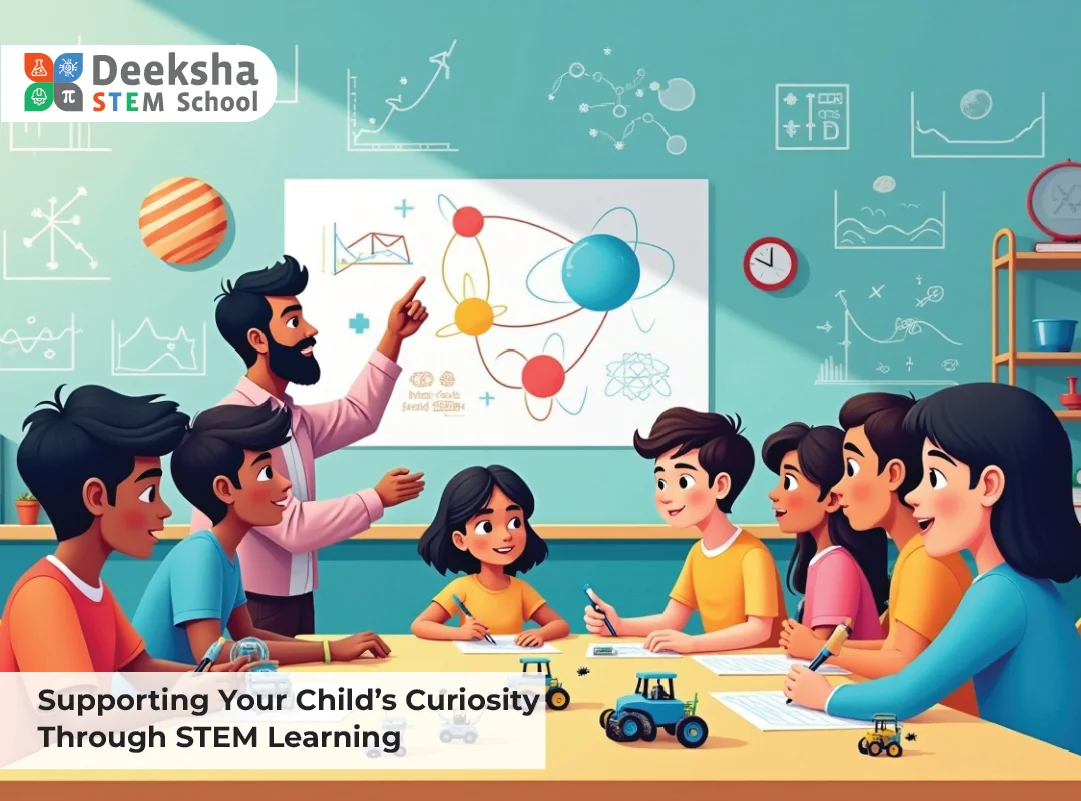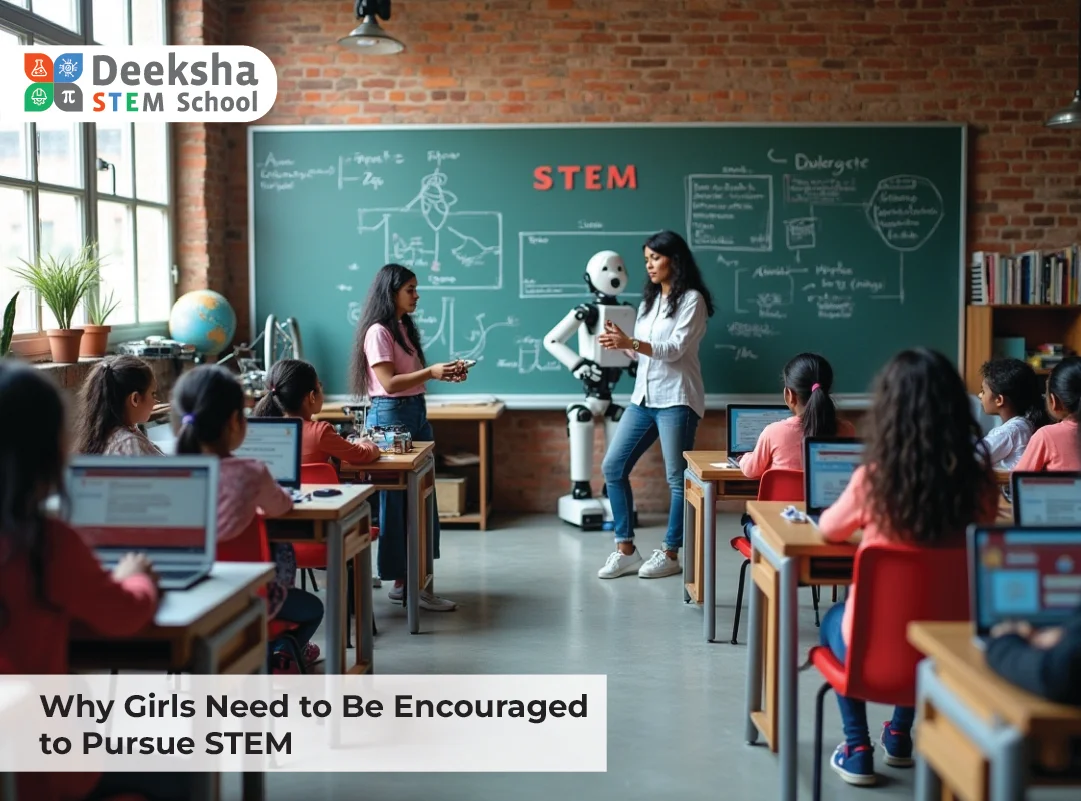Supporting Your Child’s Curiosity Through STEM Learning

Introduction
Children are naturally curious about the world around them. Their questions, observations, and explorations form the foundation of how they learn. Supporting this curiosity ensures that it flourishes into a lifelong love of discovery. STEM (Science, Technology, Engineering, and Mathematics) is uniquely positioned to nurture this curiosity by turning abstract ideas into hands-on learning experiences.
Our programs are designed to guide students through their journey of exploration, helping them connect curiosity with creativity and problem-solving. Here’s how STEM learning supports your child’s natural inquisitiveness.
The Role of STEM in Fostering Curiosity
STEM builds a framework where curiosity thrives. Unlike rote learning, which often discourages questioning, STEM actively encourages students to explore, experiment, and discover.
- Connecting Questions to Real-World Problems: STEM links children’s natural questions to practical challenges, fostering an interest in understanding how the world works.
- Engaging Exploration: By introducing activities like building models or coding games, STEM ensures students stay engaged and eager to learn.
Example: A child wondering how electricity powers their favorite toys can explore this curiosity by building a simple circuit, learning the basics of electrical flow and conductivity.
Turning Questions into Discoveries
STEM transforms curiosity into actionable discovery. Students are encouraged to ask questions, hypothesize, and test ideas—laying the groundwork for scientific thinking.
- Hypothesis and Experimentation: Children learn to propose solutions, test them, and refine their understanding.
- Critical Thinking: STEM encourages logical reasoning, enabling students to analyze outcomes and learn from failures.
Example: A child curious about plant growth can experiment with variables like light, water, and soil types to learn how environmental factors influence growth.
Hands-On STEM Activities: A Gateway to Learning
Practical, hands-on projects make abstract concepts tangible, fostering a deeper understanding of STEM principles.
- Interactive Learning: From designing bridges to coding simple games, hands-on activities let students experiment with real-world applications.
- Inspiring Engagement: These projects make learning fun, encouraging students to explore their interests further.
Example: A student might build a windmill to understand renewable energy, learning concepts like energy transfer and mechanical efficiency along the way.
Open-Ended Exploration
STEM celebrates open-ended exploration, teaching students that there are often multiple ways to approach a problem. This fosters creativity and resilience.
- Encouraging Creativity: Students are given the freedom to brainstorm and test diverse ideas.
- Building Confidence: By embracing trial and error, students learn to view failure as an opportunity to grow.
Example: Designing a water filtration system invites students to explore methods like mechanical filtering, chemical treatment, and natural purification techniques.
The Parent’s Role in Supporting Curiosity
Parents play a crucial role in fostering their child’s curiosity. By creating a supportive environment, parents can complement STEM education at home.
- Providing Resources: Equip your home with tools like science kits, building blocks, and simple experiment materials.
- Encouraging Questions: Show genuine interest in your child’s inquiries and explore answers together.
- Participating Actively: Engage in STEM-based activities with your child, from building models to conducting experiments.
Example: A parent and child could explore the science of buoyancy by building boats with household items, testing which materials float best.
What Your Child Misses Without STEM
Without STEM, children might lose opportunities to transform their curiosity into valuable skills.
- Missed Engagement: Traditional learning methods may fail to connect academic concepts to real-world applications.
- Limited Exploration: Children may not experience the joy of discovery through hands-on learning.
- Restricted Skill Development: Critical thinking, problem-solving, and creativity may remain underdeveloped.
| With STEM | Without STEM |
| Curiosity-driven, hands-on learning | Theoretical, memorization-based learning |
| Encouragement to ask questions | Limited opportunities for inquiry |
| Exposure to practical problem-solving | Lack of real-world application |
A Hub for Curious Minds
STEM nurtures curiosity through innovative teaching methods and practical projects. Programs encourage students to explore their interests, ask questions, and find creative solutions to challenges.
- Hands-On Projects: Students engage in building, coding, and experimenting with real-world scenarios.
- Collaborative Learning: Group activities ensure students learn from one another, fostering teamwork and diverse perspectives.
Example: Students curious about environmental conservation can design solutions like solar-powered devices or eco-friendly packaging, exploring sustainability through STEM principles.
Conclusion: Unlocking the Power of Curiosity Through STEM
Curiosity is a powerful driver of learning and growth. STEM education nurtures this curiosity, transforming it into critical skills that prepare children for a successful future. By engaging in STEM activities, children not only explore their interests but also develop creativity, resilience, and problem-solving abilities.
Empower your child to lead the future with tools and opportunities to explore, innovate, and excel.




